
by Kathryn de Bruin | Feb 24, 2019 | Anxiety, Family Therapy
Struggles with Child Anxiety: Is there really a way through this?
After our first blog entry of the series, I wanted to dive deeper into our family’s journey with anxiety and how we best combat it together. I have a sweet, soft hearted daughter, who can take life too seriously at times. She can err on the side of making others happy at her own expense and gets anxious about things that face her. This child anxiety has shown up at different parts of her development, be it separation anxiety in going to school, fear about monsters at nighttime in her bedroom, or fear about nightmares disrupting her sleep.
1. I Soothed Myself as a Parent
Seeing her develop these fears was so scary for me, because I’ve struggled with anxiety during my life. The last thing that I’ve ever want is for her to struggle the way that I have. And so I teetered on panicking when she started symptomizing and going to the worst case scenario – my daughter has an anxiety disorder and will struggle throughout her lifetime with this. After getting support for myself, I was able to make the switch to believe that I would be able to soothe her and could say to myself, my daughter is anxious at the moment (which is developmentally on par), but I can parent her through this and teach her how to manage these symptoms from early on, and she will be stronger and wiser growing up with learning how to
manage these challenges.
2. I Let Her Emote
She’s such an emotional little girl, and when she would emote and seem so sensitive I would start to worry, going into futuristic thinking. Anxiety always takes us into the past or the future, where we can’t fix anything. It’s important to recognize this and to stay in the present. I took a deep breath and picked her up in these moments. I let her sit on my lap and just held her tight. I’d say something my mom would say to me, “hold me tight and squeeze all the sadness into me”. Eventually her breathing would calm, and I could wipe her eyes. After leaning in, in this way time and time again, I can confidently say that it’s rare that she emotes in this seemingly intense way anymore. She’s learned to regulate herself a lot better. That’s a skill that children learn through experience, through being soothed regularly.
3. We Developed Rituals
We are a Christian family, and so we started making her bedtime predictable, and we set some rituals in place that she could count on. We pray together each evening, I’d make sure that her closet door is closed, and I tickle her back while we sing a song together. Our song is based on Psalm 4:8 and focuses on a God who is soothing and protective. She’s come to rely on doing this every night and I believe that the structure gives her peace and that the touch soothes her nervous system. The skin is the largest organ we have, and skin to skin contact can be an effective way of soothing.
4. We Built Her Confidence
Helping children to be assertive, and especially to have a ‘come back’, is very important in American culture. When her brother teases her, and always had the upper hand because he’s older and therefor more resourceful with his cognitive brain, I have taught her to stand up for herself. For a long time, after a smart comment from him, she’d run to me crying, looking for me to step in and take care of the situation. Instead of always stepping in, I started walking her through ways to deal with him. I’d ask her, “well do you believe what he said? Is it true? If it isn’t, what is true? What should we say back to him”, and we’d brainstorm a number of comebacks. Things like, “Why are you making a big deal about this? You can’t seem to leave me alone? You’re the one who’s being silly”….and so on and so on. Two years later, these come naturally for her and she can hold her own in social situations. She’s still a sensitive, sweet child, but she’s confident and can assert herself when others are giving her a hard time.
5. Finding Her Intuition
We take time for meditation, to slow down and to listen to the spirit/soul/body. When she’s uncertain about what to do, before giving her answers, I’ll ask her what her gut says, and get her to slow down to listen inside. I believe that this vital for a child to learn, that they have an intuition and that it can guide them in life. This is still rather abstract a concept for her, but we keep practicing this.

by Kathryn de Bruin | Feb 8, 2019 | Anxiety, Family Therapy
Having a child who develops symptoms of anxiety is awful. We worry about our children, but even worse, we feel so helpless as parents when we don’t know how to soothe them.
Soothing children is a primary function of being a parent, and so we end up feeling powerless when we can’t do so. We try our best to talk them out of the anxiety, to show them logically that what they are afraid of makes no sense. But the more we seem to talk them out of the anxiety, the more anxious they seem to get. And where does this leave us? If we can’t explain to them that their anxiety is irrational, then how do we help them? There is nothing rational about anxiety, it’s not a problem that we can fix by being rational. The good news is, that there is a lot that can be done. The body cannot be anxious and relaxed at the same time, and so learning how to soothe and bring the nervous system into a state of calm, will diminish the anxiety. There are countless ways of doing this and you can learn how to master these.
Anxiety is the most common emotional childhood disorder, and so learning to help children overcome this is important and will equip them with life-long skills. In fact, most adults can relate to having felt anxious at some point, and so you have the best resource within yourself, relating to how they feel in these moments of terror, and letting them know that they are not alone. Anxious moments are also common to growing up, almost like growing pains are to growth. They come during the various life stages and can be momentary as we adjust to the new challenges that life presents. Putting these symptoms into perspective, distinguishing when they are diagnosable vs a developmental growth phase is important. But either way, there is a lot to be learnt in how to reduce anxiety, which will equip you with valuable tools in managing life. Learning these tools goes hand in hand with slowing down when these symptoms arise, to evaluate your life style, to reduce stress, to listen to your child in a new way and to figure out what they need in order to be the very best version of them.
Start with learning as much about the anxiety as possible. Slowing down and tracking the symptoms, will be helpful in determining the cause of the anxiety, which will be helpful in treating it. The slowing down can be especially difficult, because anxiety breeds anxiety. We start to feel anxious ourselves that our children are anxious. And if we get caught up in a stressed-out brain and system, then we can’t see things and think clearly enough to figure out where the solutions may lie. As the airplane philosophy always reminds parents, put the oxygen mask on yourself before you place it on your child. The same philosophy applies here. You are often your child’s regulator, and so breathing deeply and calming yourself down first, will go a far way in you being able to soothe to your child.
So let’s rally together, there’s a lot I’d like to share. Journey with me through this blog series, and let’s get the best of the anxiety that plagues your family.

by Kathryn de Bruin | Jan 28, 2019 | Therapy
Families in the area are Navigating Emotional Health so beautifully through the use of San Diego Therapy!
Having practiced as a Marriage and Family Therapist and a part of San Diego Therapy for over ten years, I can see the culture changing when it comes to family life and approaching therapy.
I’m so proud of this city and the emotional health that I see around me.
I’m so impressed with the families in this city and how intentional people are in growing emotionally intelligent children.
The kinds of intake calls that I have received over these past ten years of providing San Diego Therapy has changed dramatically, indicating the shift in how people are approaching emotional health. At first the calls I’d receive were mostly parents calling to request treatment for their children. The ‘can you fix my child’ philosophy, and I would need to spend a lot of time on the phone explaining that I didn’t work with children alone, that I would need to meet with parents first. That parents should want to know who their child was meeting with, and should request updates to their child’s treatment. That parents should interview the therapist first and make sure they felt comfortable about who’s hands they were entrusting their children to.
About five years ago, the requests began to change. Instead parents were calling in asking for family treatment. “Can you help us as a family?”, with parents more than willing to be involved in treatment, and understanding they should attend the first session on their own. When I explained that I always assess a child in the context of their family system, this started to make more sense to parents too, and they easily engaged in the systemic treatment process.
Most recently I’m seeing parents be more proactive in getting help. As many parents consider getting a divorce, they are coming in to consult with me so that they can best prepare their children for the news. Some even come in to get information about how to tell their children, and how it might affect their children, before they make the final decision about their marriage (click here to see related blog articles and Youtube interviews about this issue!) And so this gives me so much hope for the world that we live in. I think that healthy societies are made up of healthy families. San Diego can be a tough city to live in relationally, as far as the culture goes and often times the lack of extended family support. But I, as a family therapist, love being here to help support your families. And I think, San Diego, you’re progressing just beautifully!
It seems that raising children with emotional intelligence has really become a goal for parents, and this is likely because the public is more educated about emotional health. I think that books like ‘Raising Emotionally Intelligent Children’, ‘Parenting from the Inside Out’ and Siegel’s newer book ‘Mind Sight’ have been so helpful in educating the public and giving them practical skills.
I wonder if having a city full of MFT’s has also made a difference. It’s said that you can’t throw a stone in San Diego without hitting a therapist. Perhaps with so many people in therapy crushing the stigma of seeking help, and having so many MFT’s who are passionate about family health, has made a difference in spreading the word about the resources that are available.
I am grateful to my colleagues for the amazing work that they do with families and children. I am blessed by these fellow therapists in the San Diego area for their continued support and inspiration – and love sending recommendations their way! Lori Underwood Therapy is one of my all time favorite referrals, as she does such effective work in her clinical practice. Mary Cipriani-Price at San Diego Institute for Couples is one of the pillars in the therapeutic community. Mary trained most of us therapists, and has been instrumental in raising up therapists for many years. I also think of amazing powerhouse Jennine Estes and her group of therapists and Associates at Estes Therapy. They are quick to respond and are all so well trained, and have inspired me in the importance of spreading the word about therapy (check out their amazing marketing!) And of course, Jussi Light at New Growth Counseling in Carlsbad is always my top referral source for North Country families! He has so much experience working with families and teens and a skillful & sharp clinician who is not only well-known, but well-liked!
Bethany Noble Lindsay and her partners at Cultivate are serving the community in such a wonderful way. I especially love hearing about her amazing work with teens & young adults in the area! Rebecca Bass-Ching at Potentia Family Therapy , focuses on such important work at providing help to those who struggle with food & body issues. Her message of being all in it together, and the importance of saying goodbye to shame in your life has truly shaped the area for the better. Jennifer Chappell March of Chappell Therapy is a friend & colleague in the EFT field, and runs an effective practice focusing on couples and relationships. She truly excels at providing specialized couples treatment! And Elaine Martens Hamilton at Soul Care House runs the most wonderfully warm practice, with well-trained clinicians that offer help in a wide range of issues. Not only is she an incredible therapist – but an author and offers a podcast as well!
All in all, San Diego Therapy & Families, you are well on your way in being an emotionally healthy city… and you have the most wonderful resources to support you in this endeavor!

by Kathryn de Bruin | Jun 26, 2018 | Family Therapy, Sexuality
Review of Passport to Purity: A Weekend Program for Parents and Preteens
by Kathryn de Bruin and Mariah McQueen
Dennis and Barbara Rainey came up with a program called Passport to Purity. It is a weekend Getaway Kit to work through with your preteen child. It looks like it’s been written for families with a Christian worldview, as it encourages prayer, has scripture integrated throughout and takes a biblical view on sexuality.
So essentially, as a parent you plan for a weekend away with your preteen. You do a special activity to have fun, but also spend the weekend working through the material. Topics covered include peer pressure, sex and dating. The program also includes doing projects together that make up object lessons. One of them includes collecting photos from your child’s different developmental stages. I like the idea of this project, as it shows gives your child an overview of their development and sets the stage to talk about the stage they are about to go through. Another exercise includes giving your child a journal, that includes notes from both their parents. Writing your child this note is very intentional, and I can imagine it might be something that they revisit during their teen years or later in life.
It seems to me that the benefit of taking a weekend with your preteen is the bonding time you get together, and the time you get to work through this material on sexuality in a non-rushed environment. The bigger benefit I think is that the program does the work for you. With a workbook, instructions, video footage, you are essentially getting taught together. As the authors says, taking the weekend to do this gives your child the meta message that this topic and that they themselves are very important to you.
So on a personal note, this program isn’t one for me. I think it’s a lovely idea, and I think it especially could work for parents who can take the time to do this, and who want a structured approach to teaching these topics. I prefer to educate my children as we go along in little bits and pieces. I don’t want these talks to be a ‘big deal’. I want them to be topics that are covered in everyday conversation. In fact, I explained menstruation to my daughter while we were sitting on a pavement waiting at a bus stop. But then that’s just my style. I’ve recommended this program to a number of my good friends. To read more about it, check out this link:
http://www.familylife.com/passport2purity
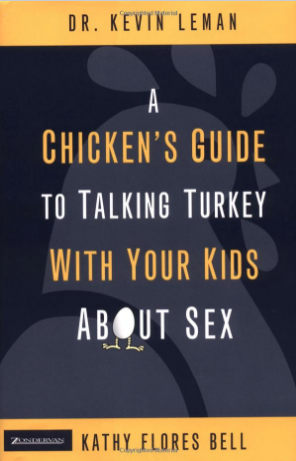
by Kathryn de Bruin | Jun 24, 2018 | Family Therapy, Sexuality
As we’ve been going through this Healthy Sexuality series, I thought it might be helpful to write a couple book reviews from sources I’ve found.
Hopefully they will be useful for you and your family and aid you in discussing healthy sexuality with your children.
-Mariah
-
Not specifically a Christian point of view but respects and advocates for healthy spirituality as a part of wholeness
-
Broken into 3 parts: Effective communication skills, a break down of kids’ developmental stages relating to their sexuality and ability to comprehend it, and a guide to talking about specific, hot button issues
-
Section one: Helps parents assess where they are at in their preparedness for having these conversations. Has helpful information but also a number of detailed exercises to practice with and get an understanding of what parents are bringing to the table. Walks the reader through cultivating a narrative for themselves and their family about what healthy sexuality looks like so that they have a clear picture of what they want to present. There is also an amazing guide on listening skills that teaches readers how to hear and respond to their children’s inquiries in a way that is supportive and understanding.
-
Section two: Gives an overview of the sexual development of each age range, pointing out normative behavior and cognitive understanding. This section also has tips for parents on how to help the child learn about their sexuality in a way that is developmentally appropriate for that age as well as things to steer away from. Also discusses having “the talk” with a 9-10 year old, how to do so and what to expect with sample scripts and questions answered.
-
Section three: Overview of how to talk to kids about specific issues such as body image, peer pressure, same-sex attraction, masturbation, pornography, abstinence, sexting/internet dating, and sexual abuse. These overviews seem more to be the beginnings of conversations that the author invites the readers to have and decide for themselves where they stand on the issues. The book ends on a discussion about the relationship between sex, intimacy and love which helps the reader and their children make those connections.
Overall, this book is very thorough. It does a good job at addressing all covered material in a balanced manner, not claiming to know what is right for every family. I appreciated the author’s constant invitation to the reader to think through the issues for themselves while offering practical information, examples and exercises as a starting off point.
-
Written for parents of kids going through puberty.
-
First couple chapters outline the crucial role parents play in children’s sexual development and understanding. It highlights importance of having conversations around sexuality as well as having a healthy sexual environment in the home to cover both the overt and covert messages sent to kids about sex.
-
Peer pressure and self esteem are covered next. The book helps readers feel empowered to guide their kids navigate peer influence rather than be scared of it. In regard to self esteem, the book encourages parents to “ascribe dignity” to their children and their changing bodies as a reflection of God’s design and love for them.
-
Chapters 7-10 are guides to walking kids through the journey of changing bodies. Helpful, practical information is given on everything from personal hygiene to masturbation in a non-anxious, normalizing way. It offers practical examples of how to handle sticky situations so that readers can feel like they have a road map.
-
Chapter 11 is a guide to have “the talk” with kids. This chapter does an awesome job at giving some do’s and don’ts when having this discussion, with an emphasis on the biology, respect for sex, honesty, and sex being about relationship more than skill. It also includes an exercise for parents to practice answering possible questions so they feel prepared.
-
The end of the book works on trouble shooting with readers about how to have conversations with your child’s sex-ed instructor at school and what to do if your child is sexually active.
Over all this book does a fabulous job at taking a non-anxious, empowering stance towards a Christian parent’s role in their child’s sexual development. It includes practical information and structure for conversations while not coming across as preach or shaming.
If you are looking for more resources, I invite you to contact myself or Kathryn, and we’d be happy to walk with you through what we recommend specifically for you and your family!
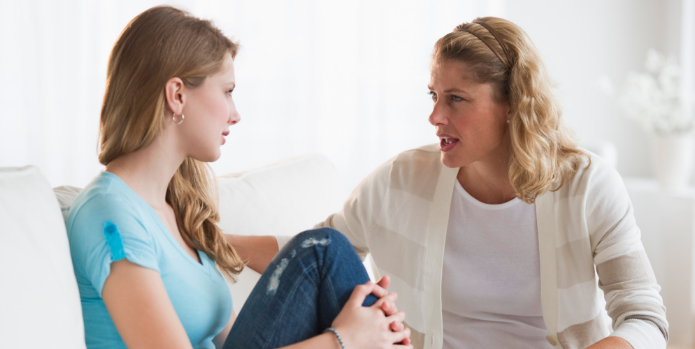
by Kathryn de Bruin | Jun 17, 2018 | Family Therapy, Sexuality
The teen years are often relationally very difficult for both parents and their kids (when I say often I mean I don’t know a single teen family that is not struggling!)
Teens are seeking to establish themselves outside of their family unit while parents are working hard to keep them close. This push and pull can case a lot of tension and confusion and parents often get the message that they don’t have a voice with their kids. But take heart, parents, your teens actually need more guidance than ever before, especially when it comes to their sexual development and helping to establish their view of a healthy teen sexuality.
Ways to get through to your teen:
1. Be quick to listen and slow to speak:
A teen needs to know that their voice, feelings and experience matters. Taking the time to listen and empathize with your teen’s experience before rushing in with answers will help create safety between you.
2. Introduce some gray:
Black and white answers are very appropriate for small children as their brains have not developed the ability to understand nuanced concepts. By the time you have a teenager, they will want to know more than just YES or NO. For example, you can help them to understand that while their sexuality is a beautiful and healthy thing, there also need to be boundaries and responsibility taken to make sure they are protecting their safety and wellbeing. Help your teen to know what while sex can be a pleasurable thing, there can also be pain and discomfort and does not happen “perfectly” right away (this is helpful for them to know regardless of whether you are hoping for them to wait until marriage). This will also help dispel some of the mysticism of sex. It is often idealized and then people can get very disappointed or feel shame when sex does not live up to all of the hype.
3. Share honestly about your experience:
Often times we set limits for our kids because we don’t wanting them making the same choices we did as teens. If this is the case for you, when you are talking about this, take the time to connect with them in a meaningful way. Share with them places of pain for you and choices you wished you made differently. Share with them what would have been helpful for you to know and be the support to them you wish you had in that season of your life.
4. Setting firm boundaries where necessary:
Teens are going to be exposed to a lot of sexual influence and it is our job as parents to protect them from what can be potentially harmful. Social media and the internet have made this even trickier and it is important that not only have reactive but proactive conversations about what is safe and what is not. Be sure to communicate that boundaries come from a place of love and desire to support their safety and wellbeing. Despite some potential pushback, your teen will actually be thankful for the clarity of boundaries. If you come across something you’re concerned about, opening the conversation in a way that does not trigger their defenses will be your best bet to getting through to them; something like “Hey honey, I found ______ and I’d like to talk with you about it” instead of “Are you having sex?!”.
What is happening and what to do
A teen’s body is continuing to grow and develop sexually and their romantic interests are starting to get more serious. Many of them will want to start “dating” and may want to start venturing into sexual experiences. The weight of the choices they are making about their sexuality increase which is what makes parental involvement so crucial. Having honest conversations about STD’s, pregnancy, sexual abuse/harassment, boundaries, pornography, etc. are all part of helping your teen have a sense of the responsibility that is necessary with sexual activity. Making these conversations open and inviting your teen to express their ideas and experiences will help create an safe environment around the topic. For example, if you are hoping for your child to be abstinent until marriage, invite them to talk with you about what they think abstinence means. Ask them how they came to those conclusions and empathize with them knowing that abstinence is the harder choice. In addition, when parents are able to have peace about their own sexuality, they are more free to share from a meaningful place rather than just laying down a set of rules and regulations. This creates connection between parent and child.
Teens and Masturbation
Masturbation, in this case, self stimulation with the goal of orgasm, is a very common sexual expression at this age. Regardless of your position on the topic, the best chance your child is going to have at a healthy understanding of masturbation is by having open communication with them about it. Because it can be such a taboo topic, many people even into adulthood believe deceptive myths like that it causes blindness or hair to grow on your hands. These scare tactics will only cause shame and guilt in the long run. Instead, it’s important to have honest conversations with your teens about masturbation so that they have a positive understanding of their sexual desire. Help them to know that the sexual urges they are having are a very normal part of growing up. You can also help them to understand what is motivating the urge – Is it loneliness? Sexual feelings towards someone? Simply sexual arousal? By helping them to understand what is behind the urge you can help them steer towards a healthy and responsible use of masturbation and/or healthy alternatives for self soothing and sexual expression.
Other questions and issues that may arise:
-
Finding your teen looking at pornography
-
How old were you when you first had sex?
-
How does a person catch STDs?
-
How do you feel about sex before marriage?
-
Why does the girl, most of the time, get blamed for teenage pregnancies?
-
Why is sex bad in the teen years?
-
What do you feel about abortion?
-
Dressing provocatively
-
Listening to crass and sexually explicit music
-
Sharing sexually explicit things over social media

by Kathryn de Bruin | Jun 17, 2018 | Family Therapy, Sexuality
By this time, your preteen and their peers are heading into the early stages of puberty (generally earlier for girls than boys).
This causes a huge increase in kids’ curiosity about sexuality and what that means for them socially, emotionally and relationally. Their changing bodies open up a sort of new frontier that they are eager to explore and understand. This can be very anxiety producing for us as parents, but being equipped with the right information about preteen sexuality, and helpful resources can do a lot to soothe those feelings.
What is happening?
Your child’s body is going through major changes in how it looks, feels, behaves and smells!! Some of these changes are going to be similar and some different than in other kids’ bodies. For some, puberty happens very quickly, for others it’s more drawn out and the extent of these changes varies between kids. Along with changes in their bodies comes social change as well. Kids at this age are eager to establish their identity, wanting to fit in and know that they belong. Boys and girls generally start socializing more and often have “crushes” on one another. They may feel the pressure to be more sexually active than they are ready for in order to try and fit in. By this time, information about sex is also being shared in their social groups and possibly at school (depending on your child’s setting).
What’s our job as the parent?
Be sure to normalize your child’s changing body as it’s easy for them to compare themselves to others and get discouraged. Help them to know that this variance in pace and extent their body develops is totally normal. Helping them maintain a sense of dignity throughout will benefit not just their sexual self image, but their self esteem as a whole. It is also our job as parents to be knowledgeable about these changes so that as they are gathering information from their different environments, we can help them make sense of what’s truth. As your child is wanting to expand into more co-ed activities, be sure to help them understand what appropriate boundaries are and they they shouldn’t feel pressured to do anything they’re not comfortable with. Having a sense of belonging and safety at home will give your child the confidence they need to resist peer pressure.
The “talk”
If you haven’t already, it is important around this age to have a conversation with your child about sex. As Kathryn mentioned previously, be sure to do so discerningly depending on your community. It is important when having a conversation with preteens about sex that you are honest, clear, simple and direct. The goal is to be the person your child comes to with questions. You want to give them a simple understanding of what happens, without using innuendo or leaving too much to their imagination. Being too indirect may leave them with more questions than answers and they may try and fill in the gaps elsewhere. This is why it is important for us as parents to come prepared with information (practicing the conversation with a partner or spouse can be a helpful exercise!). Also, remove the pressure from yourself to make this a one-time conversation. It should be something that you address with your growing child often enough to catch any questions or misunderstandings that may happen along the way. When questions come up out of the blue, first ask your child what they know about it before giving your answer. This way you won’t be giving too much information they may not be asking for and you can help correct any misinformation they may have heard.
Questions you may be asked:
What is normal/common for this age range:
-
Puberty will likely begin
-
Drive to find their identity
-
Develop first real “crush” or love interest
-
Understand that sex is not just about making babies
-
Comparing their body parts to others’ (e.g. breast or penis size, etc.)
-
Drawing pictures of genitals
-
Sexual jokes
Hopefully this helps guide you as you walk with your preteen through this often curious and confusing time – for you both! Remember, myself and Kathryn are available to chat about these topics with you, and give you more tips and resources that work for you and your family moving forward!
Best,
Mariah McQueen
Resources:
List of Changes for Girls and Boys During Puberty: http://raisingchildren.net.au/articles/physical_changes_teenagers.html
How to Talk with your Kids about Sex
A Chicken’s Guide to Talking Turkey with your Kids about Sex
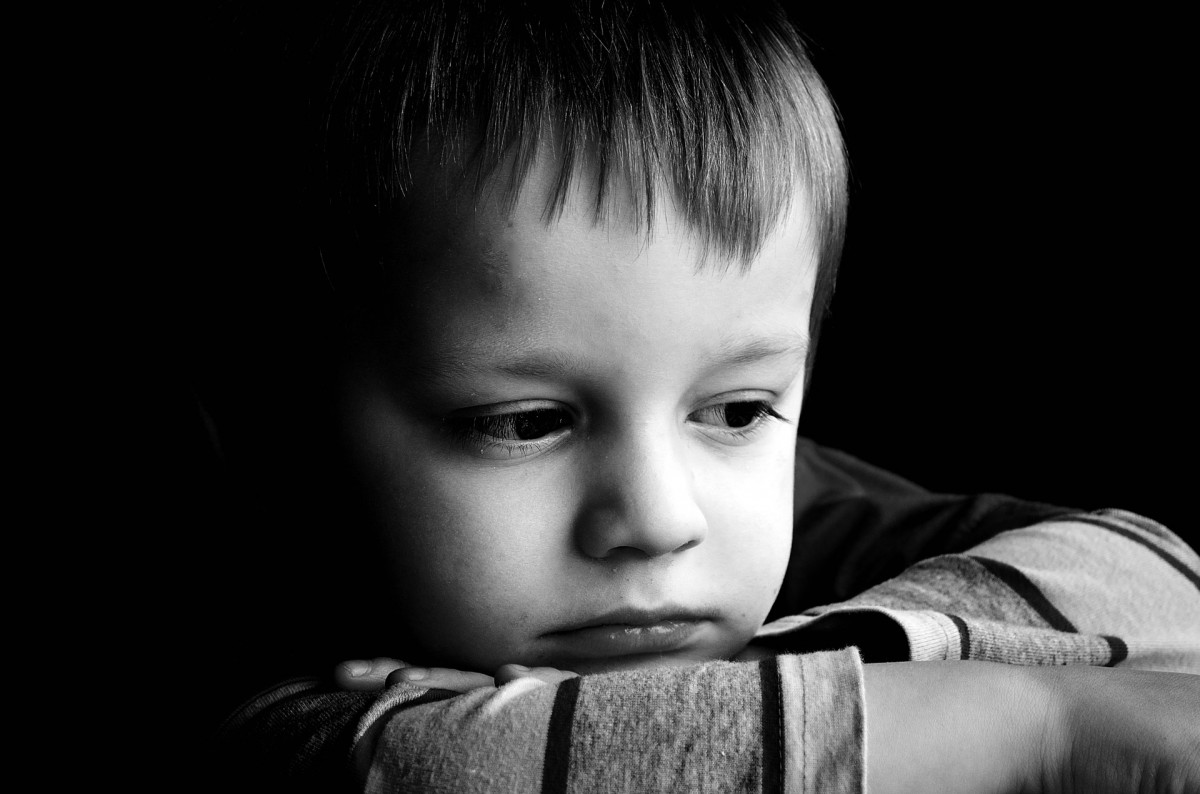
by Kathryn de Bruin | Jun 8, 2018 | Family Therapy, Sexuality
Has my child been abused, or is this behavior normal?
Childhood sexual behaviors scare us. As parents we want to distinguish between what is normal and what is childhood sexual abuse. Assessing this is not an easy task considering that not all children who are abused will have sexual behavioral problems, and not all children who have sexual behavior problems will have been sexually abused.
I appreciate Toni Cavanagh’s writing on Sexual Behavior in childhood, as she distinguishes between what is normative and what is not. She explains that sexual exploration is an information gathering process for children as they are learning about their own bodies, gender roles and behaviors. This is natural when it’s happening between children of a similar size, age and developmental status and on a voluntary basis. It most often happens between siblings or within friendships. The exploration is limited in type and frequency and is balanced with other types of curiosity in other aspects of play and life, and it doesn’t leave children feeling anxious or shamed or angry. Examples of this sexual exploration include telling dirty jokes, showing of private parts and even humping.
You are right to be concerned about sexual behavior when:
- It’s happening between children who don’t have an ongoing friendship relationship
- It’s happening between children of different ages and developmental levels
- It’s out of balance of other aspects of your child’s life
- Children have too much knowledge about sexuality and mimic ways consistent with how adults would express their sexuality
- The behaviours are very different to those of other same-aged children
- The behaviors continue despite limit setting
- Children can’t seem to stop themselves
- The behaviors cause problems for other children
- The behavior is directed towards adults
- Children don’t have an understanding of personal boundaries and personal space
- The behaviors progress in frequency, intensity or intrusiveness over time
- It is associated with fear, shame and guilt
- Children sexualize non-sexual things or interactions
- The behaviors cause pain or discomfort to self or others
- Anger precedes, follows or accompanies the behaviors
Cavanaugh has a very helpful graph giving examples of the continuum that runs from natural and healthy sexual exploration, to behavior that is concerning, to behavior that necessitates professional help. One example along this continuum is a child who rubs their own genitals when being changed or when going to sleep. This normal behavior becomes concerning if they continue to do this publically when they are consistently told not to. Professional help is needed if this rubbing happens to the exclusion of normal childhood activities and if this rubbing hurts their genitals. Her website is listed below if you want to access the rest of her chart.
There’s a broad range of what sexual behavior could look like in 2 – 12 year old children, with children exhibiting this behavior at varying levels of frequency. If your child is going to be sexual at this age, it’s likely to include self-stimulating behavior, exhibitionism, and behaviors related to personal boundaries. It’s less likely that they will show more intrusive and explicit sexual behavior.
Sexual behavior will peak around 5 years old for both boys and girls, and this is considered developmentally appropriate as long as it’s within normal limits. In fact two thirds of 5 year old boys will touch their genitals often.
2 year olds are relatively sexual compared to 10 and 12 year olds, and they become increasingly sexual up to age 5. Then this drops for awhile, until girls around 11 years old show an increased interest in love interests.
4-6 year old’s do interact spontaneously in sexual ways. They also tend to imitate sexual behaviors that they have heard about or witnessed.
Sexual abuse can include contact and also non-contact offenses. It’s sexual abuse when sexual activity involves a child where consent is not or cannot be given. Different states deem children capable of giving consent at different ages.
50% of sexually abused children will meet the criteria for PTSD. A third of abused children will report depression and anxiety. Also frequent will be promiscuity, and disruptive behavioral problems. Children will lower self-esteem will experience more distress, and children who’s coping mechanism is avoidance will tend to have more symptoms. Sexually abused children will exhibit more frequent sexual behaviors than children who are not, and will imitate it with dolls, and have multiple behaviors with other people, peers. This is also likely to happen when they are alone.
Children who have been sexually abused may show a variety of symptoms including:
Physical Symptoms:
Attempting to touch genitals of others
Sexualized play
Detailed and age-inappropriate knowledge of sexual activity
Excessive masturbatory behavior
Reluctance to undress
Avoidance of touch
Increased startle response
Hypervigilance
Extreme fluctuations in heart rate
Sleep disturbance (bed wetting and nightmares)
Drastic change in appetite and somatic complaints
Enuresis and encopresis
Emotional Symptoms:
Regressing to younger developmental levels
Lack of affect
Withdrawal and depression, anxiety and irritability
Phobias
Excessive guilt
Feelings of helplessness
Low self-esteem Obsessive ideas
Self-hate, dissociation
Behavioral Symptoms:
Abrupt change in personality
Aggression, excessive crying
Over compliance
School problems
Temper tantrums
Truancy
Self-mutilating/suicide ideation
Flashbacks
Nightmares
Lack of trust and social isolation in friendships
Hyper-arousal
REFERENCES:
Cavanagh Johnson, T. Updated Understanding Children’s Sexual Behaviors: What’s Natural And Healthy. www.TCavJohn.com
Dominguez, R. Z., Nelke, C. F. & Perry, B. D. (2001). Sexual Abuse of Children: It’s Psychosomatic Consequences. Encyclopedia of Crime and Punishment.
Friedrich, W.N., Fisher, J., Broughton, D., Houston, M. & Shafran, C.R. (1998) Normative Sexual Behavior in Children: A Contemporary Sample. Pediatrics, Vol 101, p e9.
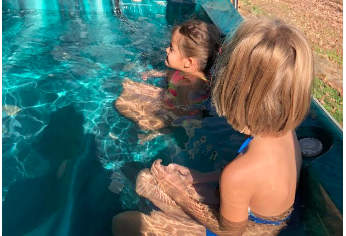
by Kathryn de Bruin | Jun 3, 2018 | Family Therapy, Sexuality
There are strategic ways that we can talk to children, and approach sexuality in the early years, that can set children up to develop a healthy sense of their sexuality for life.
Providing healthy and good touch, bringing a matter of fact stance and neutrality to children learning about sexuality, and raising confident children are some of the ways that we can do this. Because I see addressing this to a couple separate age groups with very defining characteristics, I am going to break this blog up in two sections: Children who are under 4 years, and those who are ages 4-8. If you have a young child in either of these groups, and need help knowing what is age appropriate, and some helpful responses to natural behavior, hopefully this blog helps!
-Kathryn
Developing Healthy Sexuality in Children who are under 4 years old:
What if this started before birth, instead of at puberty?
Sexuality starts at conception, and we immediately refer to our babies as boys and girls. The documentary called Raising Cain talks about how we socialize our boys and girls in very different ways. When really at birth, there is very little difference between the two sexes, other than their private parts and sexual anatomy.
Thinking about your infant’s sexuality may be helpful in getting yourself comfortable with this concept of them being a sexual being. Even though the sexual behavioral system will only come online when they are teenagers, you are investing in their self-worth and self-knowledge from an early age.
What does sexuality look like in Infancy?
Babies like to touch themselves and will naturally touch their genitals. When my children have, I try to manage my own reactivity to this. A part of me wants to react strongly and say, “No, that’s not ok.” But then another part of me wants them to learn that genitals are no different to an elbow or a leg. And so a reflection like, “Oh that’s your vagina”, or “The skin there is so soft it feels good to touch”, might be something I would say. Mostly what I want to communicate is that there is nothing wrong with their interest and curiosity, and that they need to explore their entire body and not just certain parts of it.
At the same time, this doesn’t mean that they can overly focus on their private parts. It’s very natural for children to start to self-soothe by rubbing their genitals or by what I call humping. I don’t think of this self-soothing as masturbating, because this has a very negative connotation. Instead this is about self-soothing. Of course, there are many other ways to self-soothe and young children should be co-regulating with a parent, so parents can move in and help children to regulate in different ways. But if your child is humping, this could be a sign that they need help with soothing and calming their nervous system.
Benefits of talking to your young child about sexuality as early as possible:
- You can avoid the big embarrassing and intense talk when puberty suddenly hits, you set up a foundation of healthy sexuality that you can add to over the years
- Gives you time to get comfortable with your own sexuality and with having this conversation
- Creates an atmosphere in the family context of comfort with sexuality, that prevents shame and guilt around sexuality
Ways to do this:
- Finding language that is correct and that you feel comfortable with
- Read the literature that is out there already, there are fabulous books, we’ve listed a few below
- Find an anatomy book, children love to draw and point to pictures
- Take them to the zoo and explain what is happening when they see the gorilla’s humping, or use other examples in nature as you see them happening, it takes the focus off of you and onto an experience they are already having
- Infant massage will set a foundation of good touch in your child’s life, skin to skin contact brings emotional security.
- Find ways to help your child to learn to self-soothe. The more you calm their nervous system, the more they will learnt to self-soothe. Then using calming music at bedtime, white noise machines, helping them attach to a transitional object, or soothing with a thumb or pacifier can be helpful too.
- Teaching good hand-washing practices after toileting. Young children are naturally proud of their excretions, so try not to give them the message that this is “bad”.
What’s Normal for Children at this age with regards to Genital Discovery:
- Self-stimulation
- Poking their fingers in their noses, ears, mouth, belly buttons and genitals
- Interest in different urinating postures, even standing up for girls.
Sexuality is a hot topic when you are around 4 – 8 year olds.
Children in this age group love to run around naked. They find potty talk hilarious. If you’re a part of my family, the kids love to touch my booty. Let’s face it, it’s hard to avoid sexuality in the 4 – 8 year range. Children are gathering information during these years about their gender, about roles, about sexuality. So let’s lean into these awkward moments, and use their natural curiosity to educate them well.
One of the phrases that I say most during this age groups is: “Guys, that’s not appropriate”. My kids are still bathing together, and so they get lots of lectures about not touching each other’s private parts, about giving each other privacy when they are on the toilet. Learning to dress behind closed doors and learning to ask for personal space is a constant topic too.
At 4 and 5 they are just starting to identify with their gender, until then my 3-4 year old was still calling her vagina a penis and trying to pee standing up, as she wanted to emulate her older brother. These are natural moments to say, actually you’re a girl and you have a vagina, it’s boys who have a penis. Giving children correct information gives them a foundational knowledge. School education goes a far way to giving children a healthy awareness of privacy, actually sometimes they take this too far I think. Our children are hyper-vigilant about touch because the schools are so stringent on no one touching each other, when this is a very natural age to want to hug on their friends.
Potty talk:
This seems like a natural phase for children, and I personally try not to shut it down too much. I just go along with it, giggle at times, but also try to not give too much attention to it. Putting a sharp lid on it every time I think can exacerbate the excitement and secrecy of it. So I like to let it play itself out and then slowly put up a boundary, ok guys let’s change the topic, or enough potty talk for now. Of course this is going to depend on who your child is and how much they like to push the boundaries. Children who are more naturally curious and like touching themselves and talking about butts all day long, need tighter boundaries from the get go.
Sexual Talk:
In my experience, it’s around third grade that the boys are starting to giggle and whispering about sexual nuances. They are talking about heterosexuality and homosexuality. Some boys are more interested in this than others, but I’ve heard the conversations on the playground. It’s always been my goal to teach my children about sexuality before they hear it from anyone else. And at this age, the top questions are going to be – what is sex and how are babies made?
What to share and when to share?
And so what do we share and when do we share? The rule of thumb is to share as much as is needed and as little as is necessary. If you have a naturally curious child, consider telling them sooner than later. It’s also important to consider your social context, and what your children are being exposed to outside of your home.
I wouldn’t recommend telling a child before they are 7 years old, unless you are facing some special circumstances (ie. living in a very sexualized culture). Telling them at 7 is on the young side I think. The difficulty with this, is that most parents are telling their children about what is sex is, at a later age. So while you can talk to your child about it, which I did, you might be putting your child in the position to keep a secret. Depending on what you share with them, they might want to process the information in their social group. Of course you can reinforce with them, that this sex education is only to be discussed in the family, but some children may struggle to adhere to this. And this could put them in an awkward position socially to not talk to their friends about what they already know.
Telling them at 8 or 9, I don’t think I would wait for longer than this age to share with them, because then you are risking that they hear it from others first. Of course it’s important to consider your community here. If you are part of a more sheltered community, then you could probably wait until they are 11. But if your kids are part of a public school system, and they are hearing other kids talking on the play ground, then you can bet that they will hear it from someone else first, if you wait too long.
What’s normal in this age range:
- Curiosity about sexuality begins.
- Conscious of the navel, may even grab genitals.
- Interest in bathroom activity of others. These children have interest in bathroom etiquette and genital words, such as ‘pee’ and ‘poo’.
- Asking questions about sexuality. They have vague and somewhat magical notions about sex. Often believe that a “stork brings a baby”. These children think literally, a baby grows from mommy’s egg, and the egg look like those bought in a grocery store.
- Playing doctor is common. Games of ‘show’ are common.
The scenario’s you want to be ready to deal with are:
- Questions about where babies come from
- Getting grabbed on your behind or your breasts
- Their interest in seeing you naked
- Questions about how the baby gets in and out of mommy’s tummy
- The noise in your room last night
- Whether a girl can marry a girl
- What gay means
Resources:
Raising Cane documentary, https://www.youtube.com/watch?v=y9k0vKL5jJI
Understanding Children’s Sexual Behaviors: What’s Natural and Healthy
Toni Cavanagh Johnson, Ph.D www.TcavJohn.com
God Made All of Me: A Read-Aloud Story to Help Children Protect Their Bodies, Justin & Lindsey Holcomb
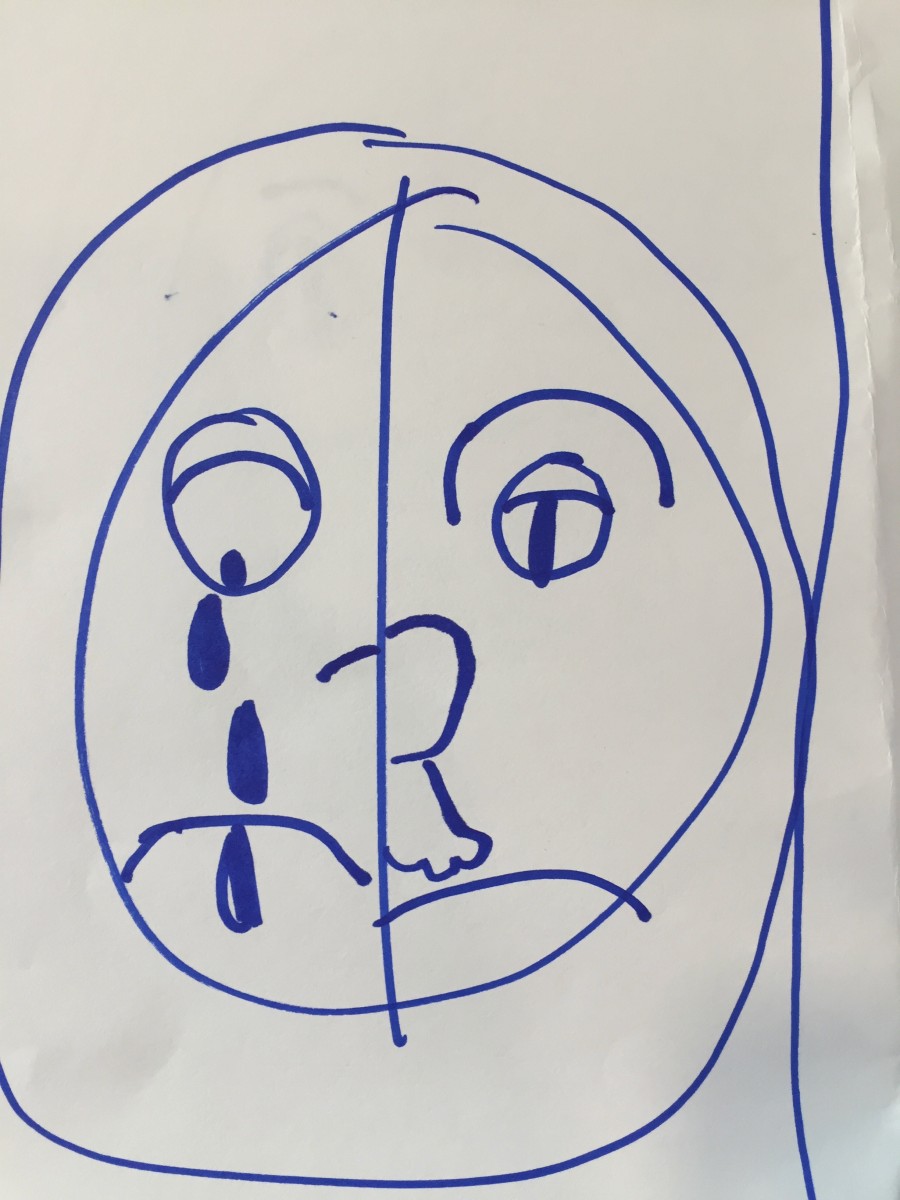
by Kathryn de Bruin | May 31, 2018 | Family Therapy
DEVELOPING HEALTHY SEXUALITY IN YOUNG CHILDREN: PREVENTING CHILD ABUSE
We all want to keep our children safe from danger, especially from sexual child abuse and molestation. At the same time we don’t want them walking around fearful of the outside world and seeing human beings as dangerous.
I know that for myself, coming from a family-oriented culture, it is equally important that my children are respectful of adults and friendly to people in general. In South Africa we grew up kissing adults hello, and we still do this. So within our different cultures, how do we find a way to educate our children to be open and friendly, and yet give them a healthy sense of protection at the same time.
My belief is that one of the best ways to prevent children from being hurt, is to raise resilient children, who have a healthy self-confidence, and who are able to speak out and to say “No”. Children who understand the difference between right and wrong, can trust their intuition, and have the confidence to speak up when things don’t feel right – that is what we are aiming for. This inner confidence provides an intrinsic protective factor. It takes time to promote this internal confidence in children and will serve them well once they have it. But it’s not all that it will take to protect our children and to keep them safe.
We need to be explicit when teaching our children about healthy sexual boundaries and giving them a solid foundation of correct information on sexuality. Teaching them about anatomy, giving them a language they can be comfortable using, giving them examples of what danger could occur and concrete examples of how to manage these scenarios.
The topical areas to cover would be:
Private Parts:
Children should know the difference between private parts and other public body parts. The parts that are covered by our swimming clothes are private. And private means that only oneself, a loving parent and a doctor may touch them and with permission. Boys have a booty and a penis, and girls have a vagina, a booty and breasts.
Secrets:
Secrets are often associated with abuse, and so we teach children to not keep secrets because they don’t have anything to hide from you. They won’t ever get into trouble for sharing a secret with you. Surprises on the other hand are good, they make you feel happy. It’s ok to keep something a surprise, like the gift you’re buying for your friend’s birthday.
How to Say No and Get Help:
When something feels wrong or uncomfortable, I like to teach my children to say 3 things, and we practice these together.
- Say NO!
- Run away
- Go and tell
Say NO as loudly as you can, as angrily as you can, say it with a mad face, say it with a firm voice. Kids love to play and practice, so turn this into a game, and help them learn a serious lesson in the process. Then run away and think out loud about all the people that they could go and tell. And what would they tell? Mommy, someone touched me on the butt. Mommy, someone looked at me and I felt funny inside. Mommy, someone tried to touch me on my private parts. It’s important for them to practice this and to say it out loud.
Stranger Danger:
It’s ok to be friendly with people in general, but also important to maintain some boundaries around people that we don’t know, until we know them a better. There are different levels of relationships, going from stranger, to acquaintance, to friend and to close trusted other. Imagine drawing our circles of closeness on the floor and having your child identify who would be in those different circles. You share more intimate details with those you are closest too, and it takes time for that trust to build. At the same time, you are more cautious around strangers until you’ve had time to get to know them.
Along with this, making sure your child knows their full name and home address, and your phone number.
Inappropriate Boundaries:
Unfortunately, most often molestation and inappropriate touch happens to our children in our own communities, with people whom we know. This makes it more confusing for children. Some of these people are adults, and it also frequently happens with our children’s peers. When peers are older and are sexually curious, or when peers have been exposed to pornography or their own molestation, they might act out what they have been exposed to, on our children. Some children struggle to regulate themselves and might also touch and hug and violate human space boundaries just because they are still learning about what personal space is.
Knowing what is normal at different ages is really important, so that we are vigilant, but at the same time, we don’t overreact. I’ve had families seek out counseling when there have been inappropriate sexual boundaries crossed, with family friends. It can be awkward to navigate, as we don’t want to lose friendships over poor boundaries, but at the same time, we want our children protected. Finding a way to have these conversations with our family friends is important and can be done.
Supervision:
Many children like to play “doctor-doctor”. Putting boundaries around this game can prevent the touch from becoming inappropriate, or from having children take off their clothes. Having the play the game on dolls and soft toys works better than their own body parts. And if you do find them undressing, put these boundaries in place, in a neutral way. “I know that you are curious and enjoying this game, but we don’t undress in front of our friends, you can play doctor on your dolls instead”.
Supervision is also necessary when our children are hanging around older children who are sexually curious, or around children of the same age, who have trouble with regulation and keeping personal space in general. My daughter loves to hug her friends, and one day she hugged her friend so hard, that they fell over, and my daughter was lying right on top of her friend. It looked a little odd, and it was just at this moment that the friend’s parent walked into the room. I called the parent after the play date and addressed what had happened. “You walked in and might have seen something that looked inappropriate. As you know my daughter loves to hug and they fell over and that’s how they ended up in that position. I wanted you to know that I saw that and how it happened. Have you had any problems with the way my daughter hugs your daughter?” She had actually not even noticed what happened, but I was glad to have dealt with it so quickly, establishing that these types of communication is fine in our relationship.
Protecting our children from abuse is important to us all. We can do this through setting up internal and external factors. Intrinsic protective factors will include good self-esteem, assertiveness and confidence. External protective factors will include supervision and having rules and boundaries around certain games and places to play.
And if you have questions, concerns, or just want to additional help navigating and communicating about these topics, I invite you to contact myself or another therapist. It’s important to build a healthy sexual foundation from the start.
-Kathryn










